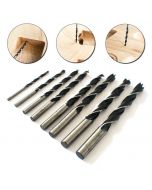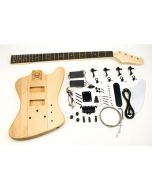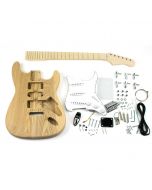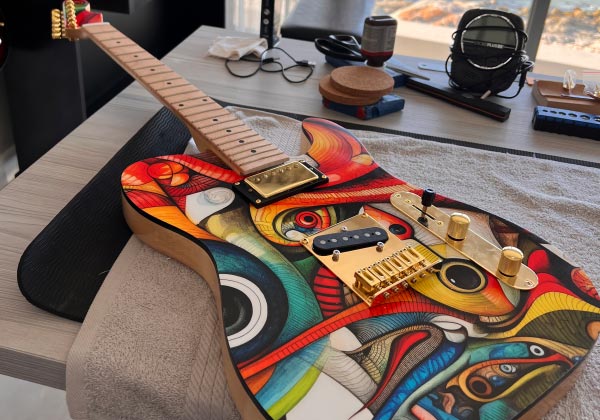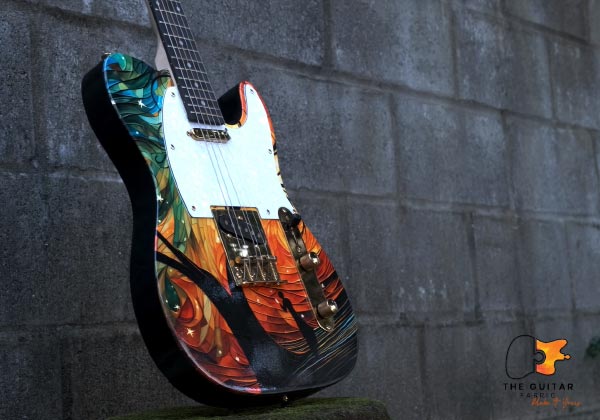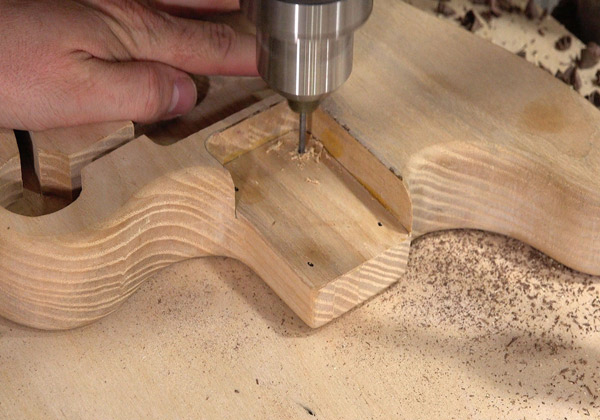
ASSEMBLING GUITAR: PRE-DRILLING AND SCREWING
Crafting your own guitar from a kit offers a gratifying experience and the chance to personalize your instrument. Properly assembling the body and effectively screwing into wood are pivotal stages that require precision. This guide focuses on the pre-drilling process for your guitar body and provides insights into optimal screwing techniques. Let's delve into the specifics!
I. Pre-Drilling for Precision and Stability
When assembling your guitar kit's body, pre-drilling is a fundamental step that enhances flexibility and ensures secure component placement. Our kits intentionally lack pre-drilled holes, allowing you to customize the positioning of elements like bridges and pickguards.
The Pre-Drilling Process: A Step-by-Step Approach
- Position your component (e.g., bridge, pickguard) onto the body.
- Lightly mark the screw locations using a pencil.
- Temporarily remove the component and utilize a hand drill to create holes at the marked spots. Ensure the drill is perpendicular to the wood surface.
- Choose a drill bit diameter matching the body of the screw (excluding the thread). For larger-diameter screws, start with a smaller bit and gradually increase to the desired size.

IMPORTANT: Pre-drilling is especially crucial for dense woods like mahogany or ash. This step prevents screw breakage and ensures a durable assembly.
II. Screw Insertion Techniques: Achieving Optimal Results
Efficient screwing involves proper screw insertion and extraction techniques. To prevent wood splitting and breakage, drill a pilot hole with an appropriate bit before screwing. This step shapes the screw's housing and aligns with the threads, preventing damage to the wood.
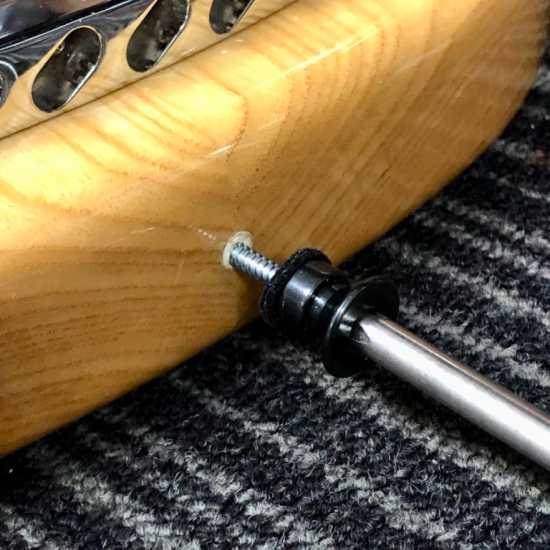
Distinguishing Softwoods and Hardwoods:
- Softwoods: Pre-drilling for soft woods involves a drill bit half the diameter of the screw. For instance, use a 2.5mm bit for a 4mm screw. Drilling around 2/3 of the screw's length usually yields good results. If splitting persists, consider a 3mm bit that covers the entire screw length. Beyond these thresholds, alternative assembly methods may be necessary.
- Hardwoods: Pre-drilling hardwoods like oak and ash is crucial. While splitting risks are minimal, preventing screw breakage during insertion and extraction is key. Attempting to screw without pre-drilling requires excessive force. Use dry lubricants like paraffin for optimal screwing into wood. In complex cases, three drilling levels are required: a fine hole spanning the screw's length, a slightly larger hole up to mid-height, and a hole matching the screw's non-threaded length.
Assembling your guitar kit involves craftsmanship and precision. Mastering pre-drilling and screwing techniques ensures a stable and resonant instrument.
 UK
UK FR
FR DE
DE IT
IT ES
ES
